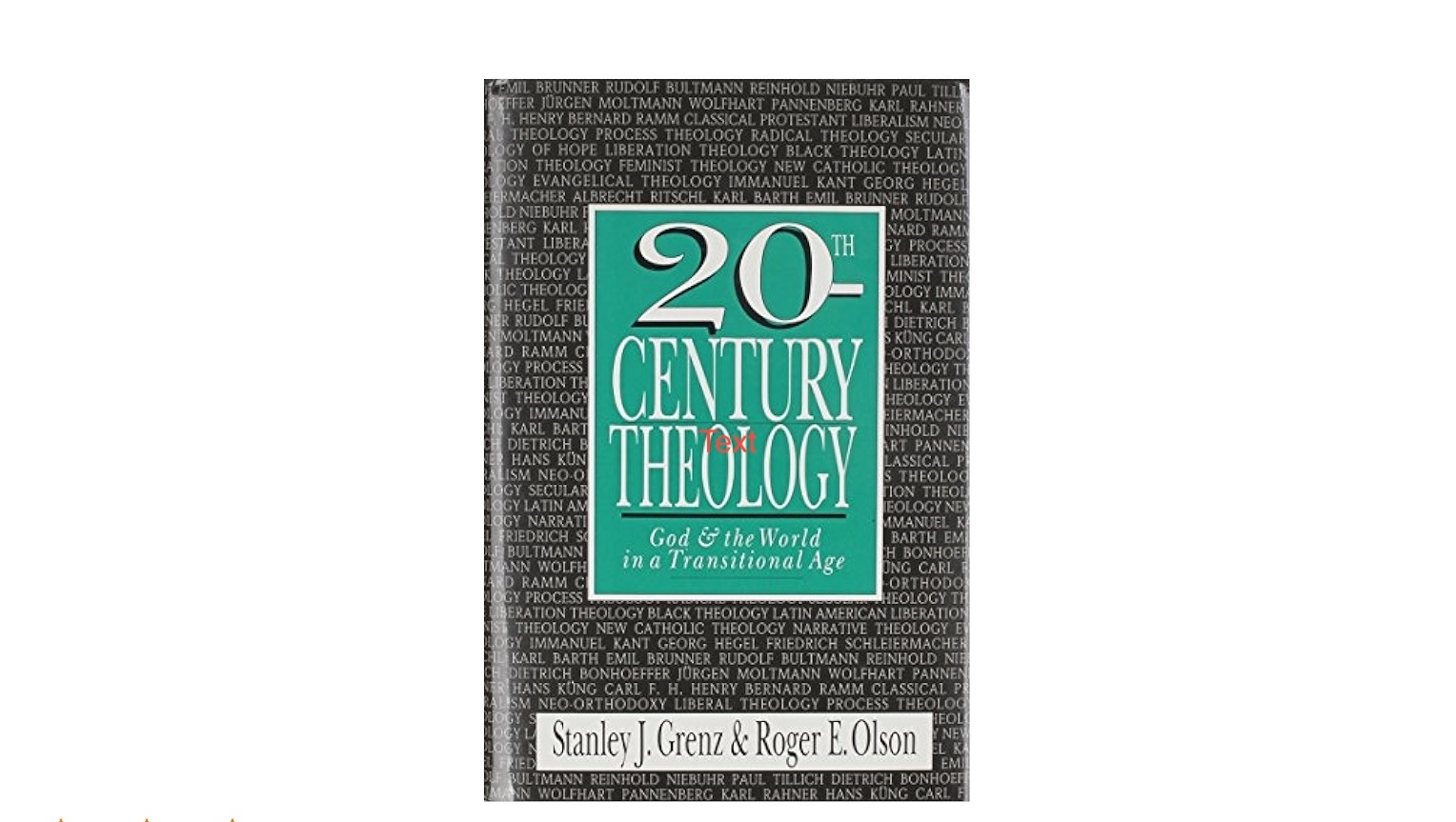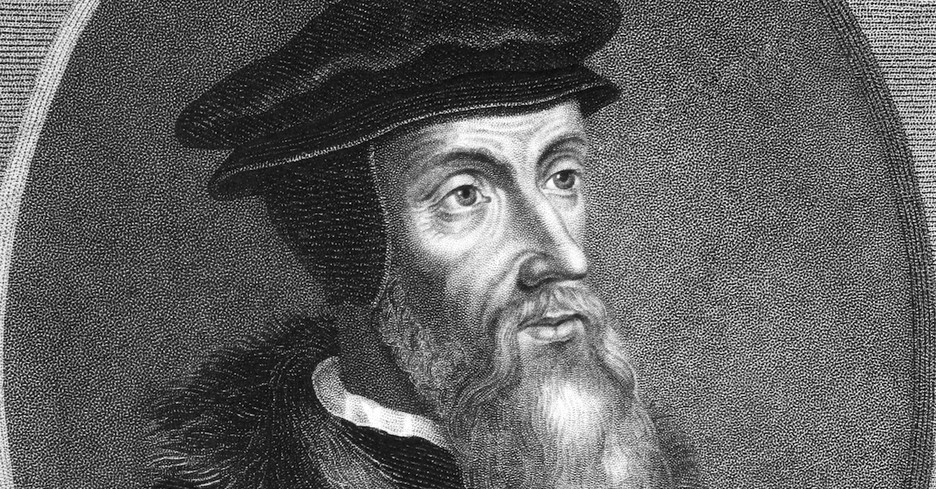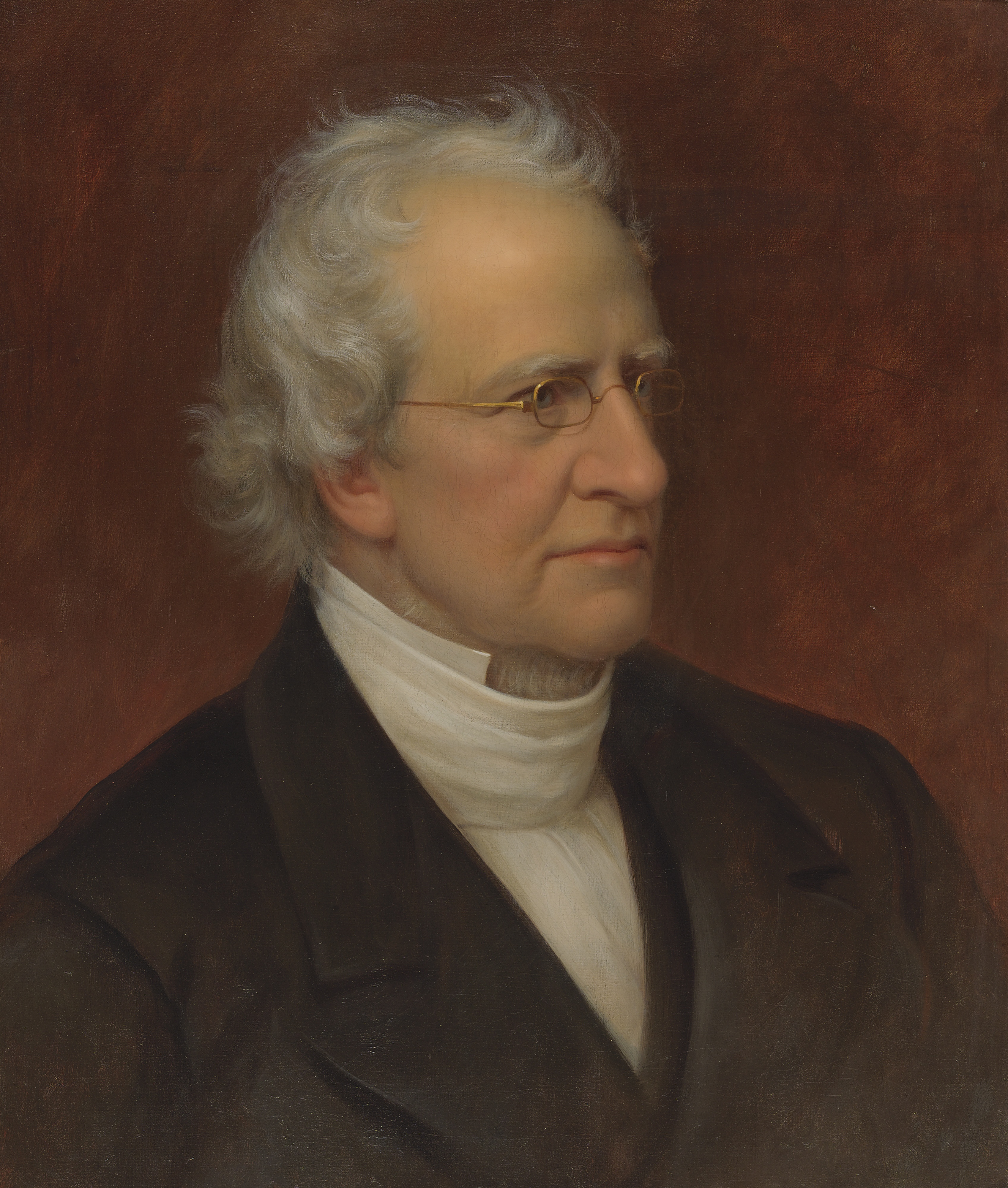Introduction
About the Authors
Stanley J. Grenz (1950–2005) earned a B.A. from the University of Colorado at Boulder in 1973, an M.Div. from Denver Seminary in 1976, and a D.Theol. from the University of Munich (Germany) in 1978, where he completed his dissertation under the supervision of Wolfhart Pannenberg. Ordained into the gospel ministry in 1976, Grenz worked within the local church context as a youth director and assistant pastor (Northwest Baptist Church, Denver), pastor (Rowandale Baptist Church, Winnipeg), and interim pastor. In addition, he preached and lectured in numerous churches, colleges, universities, and seminaries in North America, Europe, Africa, Australia, and Asia. Roger E. Olson (PhD, Rice University) is professor of theology at George W. Truett Theological Seminary of Baylor University in Waco, Texas. He is the author of The Story of Christian Theology: Twenty Centuries of Tradition & Reform, The Mosaic of Christian Belief: Twenty Centuries of Unity & Diversity, and The Westminster Handbook to Evangelical Theology. He is also coauthor of 20th-Century Theology: God & the World in a Transitional Age and Who Needs Theology? An Invitation to the Study of God (both with Stanley J. Grenz), and of The Trinity (with Christopher A. Hall).
Methodology of the Authors
Theological
Summary of Contents (Excellence)
Introduction
In its broad sense, theology may be defined as the intellectual reflection on the act, content, and implications of Christian faith. Theology describes faith within a specific historical and cultural context, and therefore it is unashamedly a contextual discipline. Because of its contextual nature, theology poses an ongoing task. The fundamental Christian faith commitment to Jesus as Lord and to the Triune God revealed in Christ is unchanging, of course. Yet, the world into which this confession is to be brought is in transition. Consequently, theology must move among three poles—the biblical gospel, the heritage of the church, and the thought forms of the contemporary world. Theologians in the twentieth century, like their forebears in every generation, have taken up the challenge posed by their discipline. We see the twentieth century as an age of transition from so-called modern culture, inaugurated by the Enlightenment, to postmodern culture. We see twentieth-century theology as the story of theology’s struggle along with culture through this transition from modernity to post-modernity. We are convinced that the interplay of transcendence and immanence as a central theological concern has contributed greatly to determining the specific path that theology has taken over the last hundred years.
Introduction: Transcendence and Immanence and Modern Theological History
At its best, Christian theology has always sought a balance between the twin biblical truths of the divine transcendence and the divine immanence. On the one hand, God relates to the world as the Transcendent One. That is, God is self-sufficient apart from the world. God is above the universe and comes to the world from beyond. As the Hebrew Scriptures so forcefully declare, God dwells in heaven. “God is in heaven and you are on earth,” writes the Preacher (Eccles 5:2). And the seer reports seeing the Lord “seated on a throne, high and exalted” (Is 6:1). God also relates to the world as the Immanent One. This means that God is present to creation. God “is not far from each one of us,” he said, “ ‘For in him we live and move and have our being’ ” (Acts 17:27–28). Because the Bible presents God as both beyond the world and present to the world, theologians in every era are confronted with the challenge of articulating the Christian understanding of the nature of God in a manner that balances, affirms, and holds in creative tension the twin truths of the divine transcendence and the divine immanence. Hence an overemphasis on transcendence can lead to a theology that is irrelevant to the cultural context in which it seeks to speak, whereas an overemphasis on immanence can produce a theology held captive to a specific culture. The theology of the twentieth century, flowing as it does out of that of the nineteenth, offers an interesting case study in the attempt to balance these two aspects of the relation of God to creation. As if in the ongoing course of theological history, the twin truths of the divine transcendence and immanence are seeking their own proper equilibrium, twentieth-century theology illustrates how a lopsided emphasis on one or the other eventually engenders an opposing movement that in its attempt to redress the imbalance actually moves too far in the opposite direction. Whether the events of the twentieth century will have marked the end of theology can be answered only by the twenty-first century. The theology of the twentieth century began in 1914. Yet its story takes us back even farther, to the epoch that preceded it, out of which and in reaction to which the theological mind of the age emerged. Nineteenth-century theology, in turn, finds its historical context within the changes inaugurated by the great revolution in Western intellectual history, called the Enlightenment. Our story, therefore, begins with the Age of Reason.
1. The Enlightenment: The Shattering of the Classical Balance
THE WAY CHRISTIANS THINK ABOUT GOD, THEMSELVES AND THEIR WORLD WAS PERMANENTLY and irretrievably altered by an era in Western intellectual history commonly known as the Enlightenment, which marked the completion of the transition from the ancient to the modern eras. Augustine’s theology served as the standard and paradigm for all Christian theologians from his day through the Middle Ages and well into the Reformation era. In the seventeenth and eighteenth centuries, the balance developed by the theologians of the Middle Ages and honed by the Reformation was permanently and radically disrupted. These two centuries form an explosive era in Western intellectual history, commonly referred to as the Enlightenment. Historians point to the closing years of the eighteenth century as the end of the Enlightenment era. Despite the imprecision concerning the exact dates of its genesis and demise, historians agree that the Enlightenment carried profound and lasting importance for the development of modern Western culture. Building on the Renaissance, it signaled the victory of a fundamental change in outlook that marked a final break with the medieval mentality and paved the way for the modern era. Prior to this era, divine revelation was consulted as the final arbiter of truth; the task of human reason was to seek to understand the truth given through revelation. In the Enlightenment, however, human reason replaced externally imposed revelation as the arbiter of truth, for reason now determined what constitutes revelation. First, the Enlightenment was the product of a philosophical revolution. Although its roots lay earlier, in the discussions of the medieval theologians, this revolution was inaugurated by the French thinker René Descartes (1596–1650), who is often dubbed the father of modern philosophy. The French philosopher introduced “doubt” as the first principle of reasoning. Enlightenment focused on the elevation of reason over “superstition.” The first principle of the Enlightenment was indeed reason. Closely related to the principle of reason was a second principle, “nature,” the emphasis on what is grounded in or arises from “the very nature of things.” “Reason” and “nature” opened the way for the third principle of the Enlightenment mindset—“autonomy.” Consequently, the Enlightenment mind elevated “proper methodology.” Finally, the Enlightenment was an era of optimistic belief in progress. Increasingly both scientists and theologians differentiated between “natural religion”—God’s existence and the moral laws known to all peoples and demonstrable by reason—and “revealed religion”—doctrines as taught by the Bible and the church.
2. The Reconstruction of Transcendence: Immanence in Nineteenth-Century Theology
As THE EIGHTEENTH CENTURY DREW TO A CLOSE, THE ERA OF THE ENLIGHTENMENT HAD run its course, especially in England. Consequently, all three shapers of nineteenth-century theology were German—Immanuel Kant, G.W.F. Hegel, and Friedrich Schleiermacher. Yet they differed sharply, for each proposed a different dimension as the essence of religion—the moral (Kant), the intellectual (Hegel), and the intuitive (Schleiermacher). The shadows of these three thinkers were cast across the intellectual landscape of the nineteenth century, competing but finally being blended together to produce what came to be known as nineteenth-century Protestant liberal theology and epitomized in a fourth German thinker, Albrecht Ritschl. The eighteenth-century German philosopher Immanuel Kant (1724–1804). Kant proposed the practical or moral realm of life as the proper sphere of religion. By constructing theology from its proper foundation in the practical reason, he offered a new attempted balance between transcendence and immanence. Just as the great astronomer replaced the earth with the sun as the center of the solar system, so also Kant elevated the mind to the center of human knowing (epistemology). Hume’s epistemological skepticism had important consequences for religious belief, for it led to a questioning of deism, the religion built on the edifice of empiricism. Each individual must be understood both morally (as a free acting agent) and scientifically (as coming under the laws of physical causation). In Religion within the Limits of Reason Alone (1793), Kant sought to take his program one step farther, moving from morality to religion (that is, Christianity). Kant’s understanding of religion as essentially ethical molded his Christology. He described the goal of creation as the coming into being of a morally perfect humankind. This goal is eternally present in the divine mind as God’s only-begotten Son, who is the object of our faith. True to Enlightenment thinking, Kant argued that because this idea is also present in our reason, we need no “empirical example” to serve as the archetype of “the idea of a person morally well-pleasing to God.” The ethical essence of religion likewise shaped Kant’s understanding of the importance of Christianity. He sought to establish religion as the devotion to a transcendent lawgiver whose will ought to be the goal of humankind. Immanuel Kant sought to overcome the Enlightenment and establish a new relation between transcendence and immanence by shifting the focus of religion from the domain of “pure reason” (the realm of sense-based knowledge) to that of “practical reason” (the realm of knowledge based on the experience of the human person as a morally conditioned being). A second alternative to the Enlightenment was offered by another great German philosopher, Georg Wilhelm Friedrich Hegel (1770–1831). Whereas Kant found the clue to the transcendent in the ethical dimension of human life, Hegel looked to the intellectual dimension for that sense of transcendence. He linked ultimate truth with the process of human history and the capability of the human mind to comprehend the meaning of that process. Three related concepts capsulize Hegel’s attempt to envision reality in a new way: spirit, truth as process, and the dialectic. For Hegel, Spirit is not merely a substance (an existing thing), but an active subject, an activity, a process. Truth is the process itself. Hegel linked the truth of reality with the process of history, which he viewed as Spirit coming to self-awareness. For Hegel, this dialectic is not a human construct, but is descriptive of reality as it actually is. The Hegelian dialectic is generally described in logical terms as the triad of thesis-antithesis-synthesis. These concepts—spirit, truth as process, and the dialectic—form the foundation of Hegel’s view of the relationship among philosophy, theology, and history. When viewed in religious terms, the Absolute Spirit is God, who reveals himself in the process of history. The concern for Incarnation in turn formed the basis for Hegel’s evaluation of Christianity. Although most Christians have never heard of Schleiermacher, his ideas about religion in general and Christianity in particular have trickled down to them through the theological education of their pastors, denominational leaders, favorite religious authors, and college teachers. Scholars of modern Christian thought almost universally hail Schleiermacher as the father of modern theology. During his later years, Schleiermacher produced a number of important works, including translations of Plato, books on ethics, philosophy, and hermeneutics, and a life of Jesus. It is especially evident in those schools of theology labeled “liberal” that came to dominate Protestant thought toward the end of the nineteenth century.
Albrecht Ritschl and Classical Liberal Theology: The Immanence of God in Ethical Culture
Historically, however, “liberalism” refers to a specific movement in Protestantism that dominated academic theology around the turn of the century. It arose first in Germany among students and followers of Schleiermacher and Hegel, and it took on its most influential form in the school of Albrecht Ritschl. Consequently, the best way to define classical liberal theology is to study it historically—through its major representative thinkers. Three stand out as most clearly representative of the essence of late nineteenth- and early twentieth-century liberal theology: Albrecht Ritschl, Adolf Harnack, and Walter Rauschenbusch.
3. The Revolt Against Immanence: Transcendence in Neo-Orthodoxy
The neo-orthodox movement was characterized by the attempt of theologians to rediscover the significance for the modern world of certain of the doctrines that had been central to the older Christian orthodoxy. On the one hand, neo-orthodox theologians followed the older liberalism in viewing the Enlightenment as a given, and as a result, with their liberal forebears, they accepted biblical criticism. The Word of God—the voice of the Transcendent One—no longer thundered the good news of reconciliation to humankind lost in sin. Neo-orthodoxy sought to reassert these forgotten themes to a world that once again needed to hear God speak from beyond. In terms of the flow of the theological history of the twentieth century, one of the great strengths of Barth’s theology lies in its recovery of the transcendence of God. In his zeal to protect God’s freedom and transcendence, however, Barth may have sacrificed too much on the human side of the God-world relationship.
4. The Deepening of Immanence: Reformulations of the Liberal Tradition
The liberalism, the rebirth of which they advocated, was one that had gone through the fires of neo-orthodoxy. More than any other twentieth-century theologian, Paul Tillich deserves the title “apostle to the intellectuals.” The proposal of Paul Tillich did not look for God in the transcendent realm beyond, but rather in the depth of existence. He called us to become transparent to the divine ground of our being as exemplified by Jesus the Christ, who is the “New Being.” In this way, Tillich deepened the theme of immanence found in liberalism on the basis of the mid-twentieth-century infatuation with existentialism. Process theology attempted to reestablish the vitality of theology in the context of the twentieth-century scientifically orientated world. In this way, it sought to provide an alternative to the radical rejection of philosophy found in the dominant strand of theological thinking in the first half of the century—neo-orthodoxy. In the end, transcendence is swallowed up by immanence, and the process God is but the mirror of the human striving for unity. Process theology, in short, has not been able to overcome the central problem of theology since the Renaissance.
5. Immanence Within the Secular: The Radical Movement
Nevertheless, in reacting to the radical transcendence of neo-orthodoxy, they did indeed dissolve the transcendence of God too completely into the world. In this way, immanence once again overshadowed transcendence. In spite of its devastating shortcomings, the radical theology of the first half of the decade opened the door to a creative renewal of transcendence that avoided the spatial dualism the radical theologians found so abhorrent.
6. The Transcendence of the Future: The Theology of Hope
Following the theology of hope, Pannenberg reintroduces the concept of the divine transcendence—and this in the mode of the future as standing over against the present. More so than Moltmann, Pannenberg has been able to link salvation with creation, thereby developing a creative understanding of the relation of the world to its transcendent/immanent Source.
7. The Renewal of Immanence in the Experience of Oppression: Liberation Theologies
Feminist theology’s doctrines of God and Christ illustrate the inherent weakness in its methodology. Their reformulation of neither doctrine holds anything substantial in common with classical Christianity. Because hierarchy is assumed to be patriarchal and patriarchy is evil, God (or God/ess) cannot be Father or even Parent. Because dualism is a male-oriented, oppressive way of regarding reality, God (God/ess) and the world cannot be absolutely different. Feminist theology must rediscover transcendence in both its methodology and its doctrines of God and Christ if it is to exercise a lasting, positive impact on Christian theology.
8. The Transcendence of the Human Spirit: The New Catholic Theology
After all the magnificent apologetics, we are left with a fairly weak, liberal Protestant theology in which historical criticism and the modern, scientific worldview play the leading roles. Karl Rahner’s judgment that Küng must be regarded as a liberal Protestant was quite correct.
9. Transcendence Within the Story: Narrative Theology
HUMAN BEINGS ARE STORYTELLERS—PERHAPS BY NATURE. ALL TRIBES AND PEOPLES express their understanding of reality in terms of myths and stories. Narrative theology looks for the transcendent God within the story of the community of faith. Whether or not the eternal truth of the transcendent God can emerge from the competing religious narratives found within the human story remains a yet unanswered question.
10. Reaffirming the Balance: Evangelical Theology Coming of Age
With his more profound understanding of the positive contributions of the Enlightenment, Ramm was able to move beyond the backward-looking approach of Carl Henry. In so doing, he provided the foundation for a generation of younger evangelical thinkers who would build on the freedom to think critically and engage in positive dialogue with modern culture. Evangelical theology had begun to come of age. But for the younger thinkers, Ramm had not moved far enough. Although he sought new ways to reaffirm the grand evangelical axiom that God speaks to us from beyond the world, the evangelical innovator seemed to have drunk too deeply from the traditional theological well with its employment of the now discredited spatial metaphor of transcendence and immanence. Despite his significant contribution to the movement, Ramm had not totally resolved the evangelical dilemma.
Conclusion
IN EVERY ERA THEOLOGY HAS BEEN CONFRONTED WITH THE CHALLENGE OF ARTICULATING the Christian understanding of the nature of God in a manner that balances, affirms, and holds in creative tension the twin truths of the divine transcendence and the divine immanence. The biblical God is self-sufficient apart from the world, is above the universe, and comes to creation from beyond. But the God of the Bible is also present to creation, active within the world, and involved with the historical and natural processes. This God had made himself present to humans first as their Creator “in the beginning” and then as their Redeemer in the Incarnation of Jesus. The medieval model found the presence of God in the world now mediated primarily through the church, which served as the link between heaven above and earth below. On the contrary, throughout the century, theologians of immanence and advocates of transcendence sought to redress each other’s overemphasis. Nevertheless, in the end, the greatest lasting legacy of this century of theology is its recovery of the importance of the transcendence theme. Process theology articulated a thesis that all subsequent theologies have adopted, even if they adapted it to their own perspectives. At the transition between the modern and the postmodern eras, therefore, theology has the opportunity to articulate anew and in new ways the Christian conviction of the reality of the transcendent-immanent God. This God invades our present circumstances from the vantage point of the transcendent telos of the whole of reality. At the same time, this God is immanent in our circumstances, sharing our present, just as God invites us to look beyond our imperfection to the as yet unattained perfection. The God who addresses us from beyond—from the then-and-there—is the God who is with us in the present—in the here-and-now. Our realization of this truth lies at the heart of the theological balancing of the divine immanence with the divine transcendence. Recipient of a Christianity Today 1993 Critics’ Choice Award. Now in paperback! Stanley Grenz and Roger Olson offer in this text a sympathetic introduction to twentieth-century theology and a critical survey of its significant thinkers and movements. Of particular interest is their attempt to show how twentieth-century theology has moved back and forth between two basic concepts: God’s immanence and God’s transcendence. Their survey profiles such towering figures in contemporary theology as Karl Barth, Rudolf Bultmann, Dietrich Bonhoeffer, Reinhold Niebuhr, Paul Tillich, Jürgen Moltmann, and Wolfhart Pannenberg. It critiques significant movements like neo-orthodoxy, process theology, liberation theology, and theology of hope. And it assesses recent developments in feminist theology, black theology, new Catholic theology, narrative theology, and evangelical theology. An indispensable handbook for anybody interested in today’s theological landscape.
Critical Questions
What kind of theologies are moving in the world weight now? What is their similarities and their deference? And which is applicable for us today as Pentecostal Christians?




